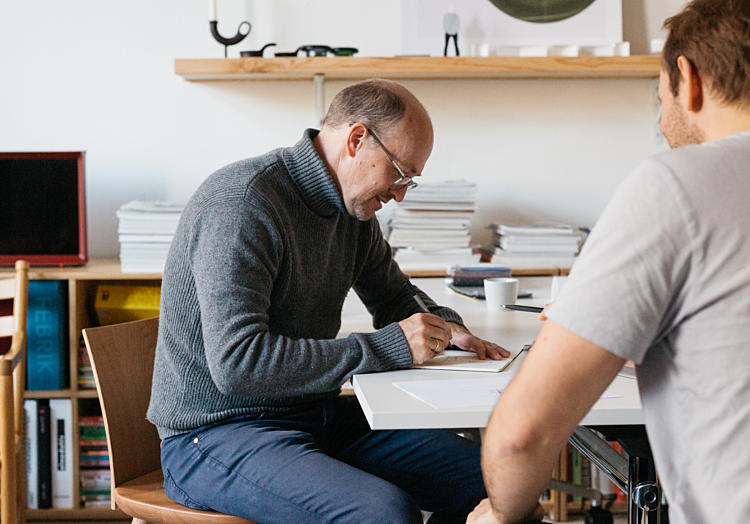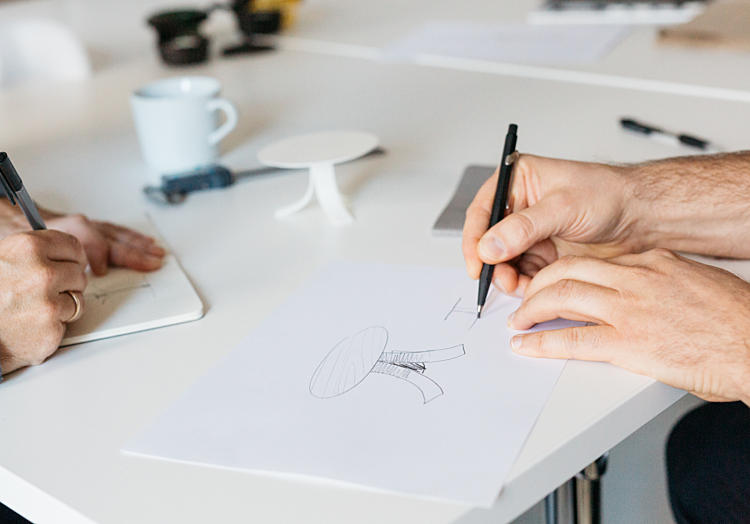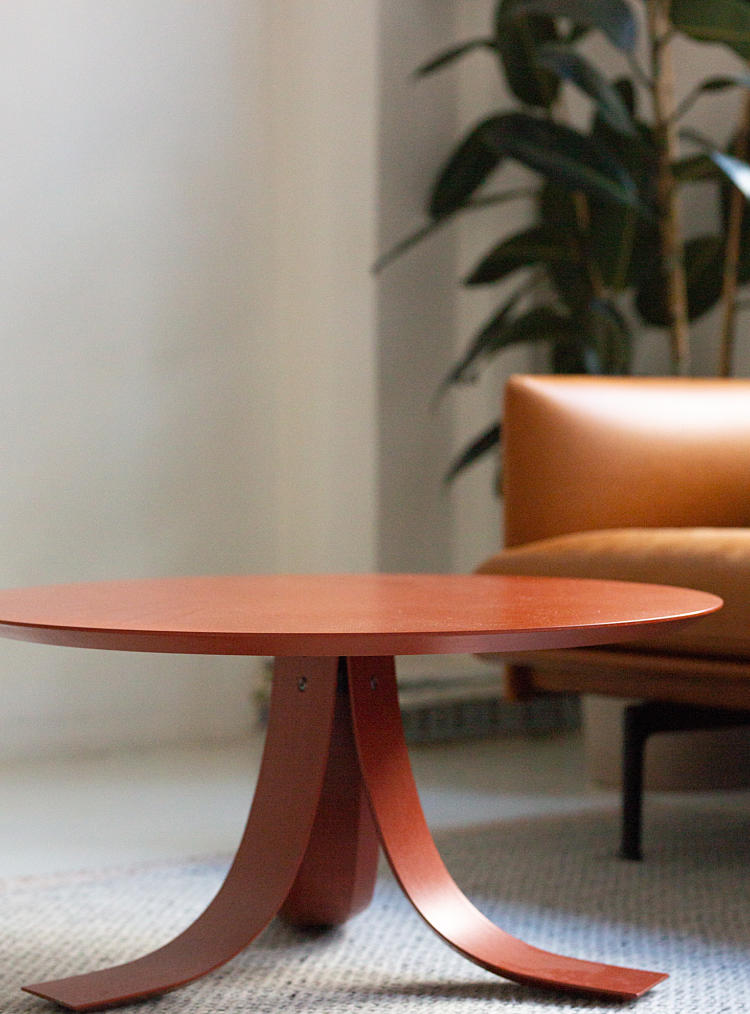For Torbjørn and Espen of Anderssen & Voll, there is no straight road from idea to finished product. Visiting their studio gives a hint of how they develop their award winning products. Being hands on, so to speak, was essential when they created the round side table Pi.

From 3D to full scale modelling
– I think it’s a great table. I can’t see why it doesn’t sell more.
Torbjørn Anderssen laughs. Their studio in central Oslo stretches into a big, old brick building, with large rounded windows and lots of daylight. It’s also, as one would expect, impeccably furnished. Torbjørn and Espen established Anderssen & Voll in 2009, after leaving the successful design group Norway Says. Since then, they have received numerous awards, including the Honorary Award for best Design in Norway.
– The important thing is that it turns out good. We don’t have a strong urge for self-realizating, we compromise a lot, says Torbjørn.
– Sometimes an idea is done after the first sketch, other times it takes a long time, Espen adds. – But we always try to develop the idea as much as possible by all available tools, from 3D to full scale modelling.

A bit japanese looking
Around the room, brown paper models of future furniture stand side by side with old classics and their own finished products.
– We used to spend a lot of time making beautiful models, but nowadays we go for rougher versions in cardboard and paper. It’s more efficient, and we save our lungs from inhaling sawdust.
The biggest challenge when developing the Pi table was figuring out how to attach the tapered legs. When working on the Pi table, they had different ideas on how to hold it up. Deciding on the ribbon like legs was an idea that popped up in a face to face meeting with Pål Lunder, founder of Fjordfiesta.
– That wouldn’t have occurred to us if we had sent it away somewhere instead of doing the modelling ourselves. The personal meeting is important for the process. The table turned out a bit japanese looking, like a lot of our furniture. The slightly tapered legs give the side table a playful personality.
– With a simple table like that, it’s the little changes that make a big, visual impact. The table is produced in Norway, at Fjordfiesta’s factory in Dokka. – It was interesting to see what we could achieve with the available materials in the factory and the tools we have, to develop the Fjordfiesta brand.


Cushions, trays and drawers
The design duo has also made cushions, trays and drawers for Torbjørn Alfdal’s classic Krobo bench. Wanting to make it clear that the additions weren’t original, they kept them strictly modern, but again with a hint of playfulness.
– We wanted to add something that didn’t take away the idea of a universal product. What is missing, how would I use this myself? They both discovered the bench as young design students.
– The Krobo bench was the ultimate product to everyone in school. I remember spotting one in the hallway of my sister’s apartment, covered in paint. So I just sort of asked if maybe I could replace it with something else, and noone cared. I walsed off the paint to discover a beautiful rosewood.